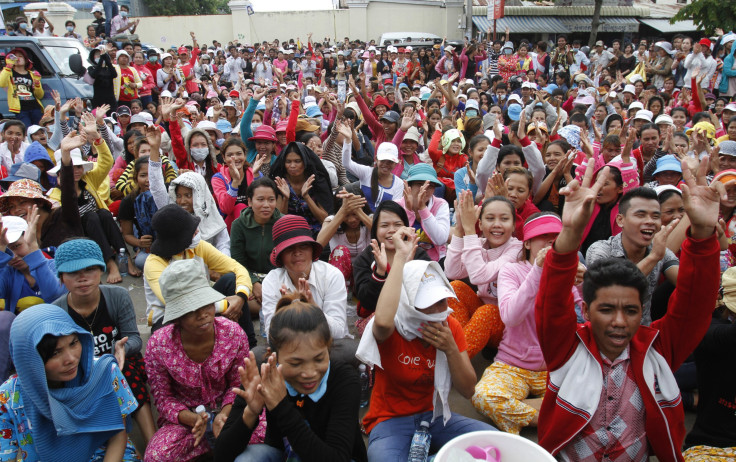Cambodia's Garment Industry Exported $1.56 Billion In First Half Of The Year, A 32% Year-On-Year Growth

With the lowest wage rate in Southeast Asia and a young workforce, Cambodia has emerged as the global manufacturing hotspot despite outbreaks of violent industrial action and safety concerns.
Its garment sector, which makes up the bulk of the country’s output in the global economy, is booming – the country exported $1.56 billion worth of garments and textiles, a 32 percent year-on-year growth.
The figures, from the Ministry of Commerce, showed that the European Union is catching up to the U.S. as the largest recipient of Cambodian-made garments, according to Cambodia Daily. In the six-month period, exports to the EU were worth $532 million, up 45 percent from the same period last year. Exports to the U.S. rose by 17 percent to $660 million, in comparison. Growth in exports was the result of stabilizing demand from the U.S. and Europe, according to Kong Putheara, director of the Ministry of Commerce’s Statistic Department.
“The increase in garment exports is a result of the growing external orders because international markets have become stable and people are earning more income [in the West],” Putheara said.
Regional factors also work in Cambodia’s favor, according to Srey Chanthy, interim president of the Cambodian Economic Association.
“I think it must be the Bangladesh issue, and also China — where labor costs are very high now,” Chanthy said, referring to the factory collapse in Bangladesh in April that led to the country being stripped of favorable trade terms by the U.S., which could be making Cambodia an attractive place to set up manufacturing operations.
“Many new factories have been coming in the last six or seven months or so. They set up very quickly and start exporting.” Chanthy added, according to Cambodia Daily.
Cambodia’s boom isn't without its own challenges, however. In May, Cambodia had two of its own factory collapses, killing two workers and injuring 31.
The incidents caused concern over safety in the sector and over the effectiveness of the International Labor Organization’s flagship monitoring program, Better Factories Cambodia.
Wage also increased to $14 a month, despite some arguing it would hurt manufacturing.
“The government and [the Garment Manufactures Association in Cambodia] argued that if wages increase manufacturers will flee, but they are pouring in at the moment,” said David Welsh, the director of the U.S.-based Solidarity Center in Cambodia, adding that the raise itself is still less than a living wage for garment workers.
“The industry is booming,” Welsh said. “But workers need to get a fair share of that pie.”
The first half of 2013 saw 111 cases of labor disputes, compared to 114 cases in the first half of 2012, according to figures from the Arbitration Council. The number of strikes during that period rose to 30, compared to the first half of 2012, Cambodia Daily reports.
These disputes drew international attention to the working conditions of the garments industry, but a change may be slow to come, according to an article in the Wall Street Journal.
"The core problem is the way the supply chain is structured, which exploits the most vulnerable people, the workers," said Sanjiv Pandita, executive director of the Asia Monitor Resource Center, a nongovernmental organization focusing on Asia labor issues.
The government, factories, brands and even some unions keep labor costs down for their own economic benefit, labor activists claim, and workers, often extremely poor and uneducated, have little bargaining power.
"There is a lot of injustice in Cambodia," even after years of work to improve factories, said Lao Bunna, a 43-year-old who works in one of the heavily guarded garment complexes that line the chaotic roads into Phnom Penh, the capital of Cambodia. Lao’s boss told her and other employees that they would be fired if they refused to work overtime, Wall Street Journal reported.
© Copyright IBTimes 2025. All rights reserved.





















